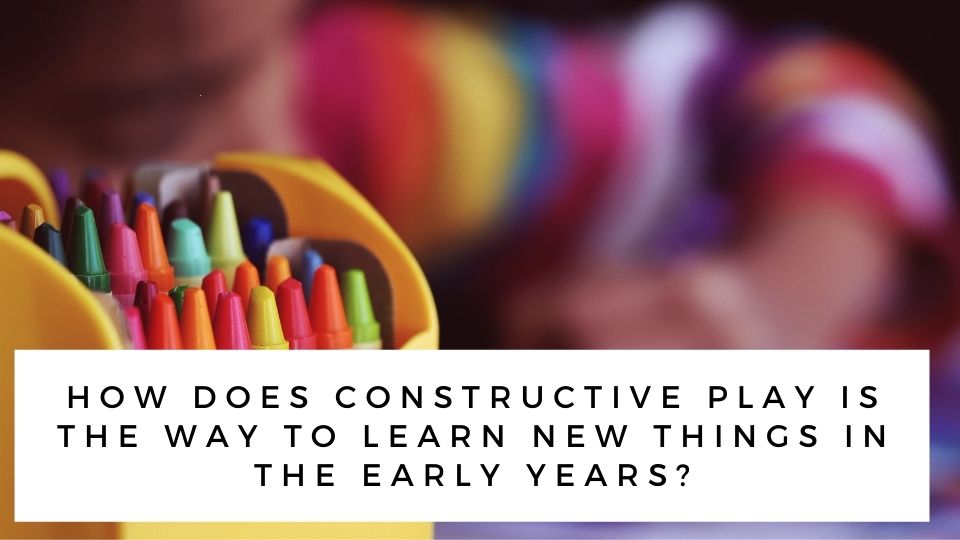Have you ever seen a happy child! What was he doing – playing or doing a given task under supervision. He was playing. Children like to play and explore more than doing a task, following orders or being supervised early. Leave them to their own devices and see them learn and grow. However, there are ways to learn constructive play and constructive play in the early years plays a very important role in a child’s life.
What is constructive play?
To put it in short – it is creating or building. In constructive play or construction play, a child is provided with safe objects and tools that can be easily handled to be used for playing by building something, giving shape to an object, and mostly trying to make something new. Such games require hand and eye coordination, some thinking and the use of so many skills. Therefore, it can motivate children to develop a set of new skills – all as a part of the game that he is playing and becomes one of the ways to learn constructive play.
Research in constructive play
Jean Piaget was a child development expert. He had done a lot of work in trying to understand how children learn. He concluded that children have their ideas about things and the world in general. Their learning occurs when they embark on a journey to find out about the world and put it against their ideas. The interaction between their ideas and what the real world is and how it works gives them the knowledge they unknowingly seek. Children are very eager in trying out their ideas. They rapidly generate new ideas as well, which leads to ways to learn construction play. For them, this is the key to how they would open the lock to the world of learning and gain knowledge and obtain skills.
Also Check – Top 9 Proactive Classroom Management Techniques That Really Work
Stages of play
This was Piaget’s answer to the learning puzzle. He explained it by saying that a stage of functional play precedes construction. In the functional play stage, the children look at what is given to them, take it in their hands, smell it, touch it, feel it, taste it, note the different objects, accept their sizes, listen to their sounds, check their roll, slide or movement and so on. In this stage, they understand different sizes and, with this experience, explore ways to learn constructive play.
Material and their uses
When providing the material to children, it should be in consideration that they are non-toxic and safe to a large extent and given in limited amount initially,
- Sand – used in making castles, shapes, boundaries, puddles etc
- Water – used for making wet mud, puddles etc
- Wooden blocks and sticks – used for making houses or as accessories
- Clay, soil or play dough – used for making pots, shapes etc
- Construction blocks like LEGO – used for making objects of various shapes and sizes.
Benefits of constructive play
Each child has his their liking and propensity. Some go for natural and raw material, whereas others go for readymade shapes like LEGO more often. Every material has the potential to give the child happy hours and ways to learn constructive play. With them, the child is always engaged, is doing something, and intends to make something. Being creative is the motto of providing the material and is the flag borne by the child. Their curiosity makes them explore the material, and their ideas make them think of using them. This leads to construction and meaningful learning.
What a child learns
Exploring the shapes and sizes they learn geometry. Handling the material makes them learn to count. The movement of objects makes them understand gravity, balance and physics. Children like to name their objects and constructs and like to talk about them. This makes them obtain verbal ability and learns language and grammar. By comparison of their creation with the real world, they understand the likeness and differences. Child play easily makes them understand the value of making contacts and relations and becoming a team player. Children should be allowed to play in groups to teach this value. Their confidence and self-esteem also increase as they take pride in their construction. It is useful in making them aware of and teaching them human values too. Above all, they improve upon their creativity.
Conclusion
There can be no doubt about the utility of constructive play in early years of a child’s life in providing him with an opportunity to learn, develop skills, and grow. The skills acquired in the early years influence mental growth, preparing the child to take on the challenges of higher studies later in their life. Learning and growing should go hand in hand. Let us not detain the child from taking on this journey.




